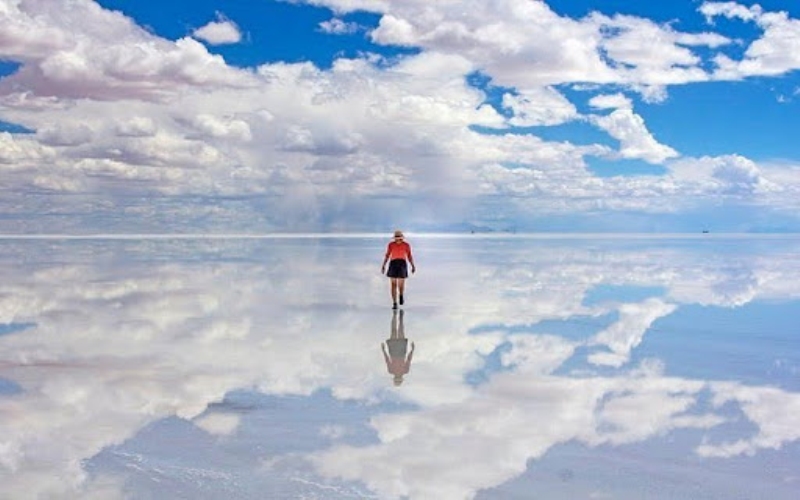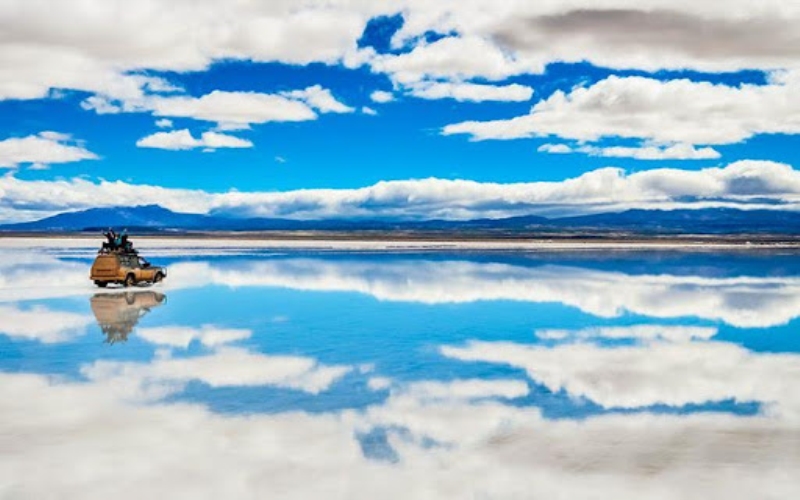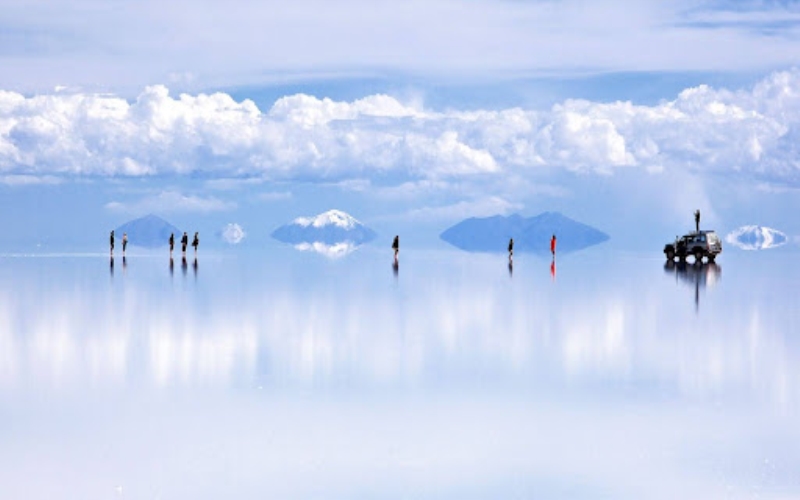Introduction:
Salar de Uyuni, the world’s largest salt flat, is a mesmerizing natural wonder that captivates visitors with its otherworldly beauty and vast expanse. Located in southwest Bolivia, this stunning landscape attracts tourists, photographers, and adventurers from around the globe, offering a surreal and unforgettable experience. In this article, we embark on a journey to discover the wonders of Salar de Uyuni, exploring its unique features, geological significance, and cultural significance.
1. Geological Formation:
Salar de Uyuni was formed as a result of the transformation of prehistoric lakes into vast salt flats over thousands of years. The area is rich in salt deposits, which were left behind as ancient lakes evaporated, leaving a thick crust of salt that extends for over 10,000 square kilometers. The flat terrain, combined with the high altitude of the Andean plateau, creates a unique landscape that stretches as far as the eye can see.
2. Natural Beauty:
The vast expanse of Salar de Uyuni offers a breathtaking panorama of shimmering white salt plains that seem to stretch endlessly to the horizon. During the rainy season, a thin layer of water transforms the salt flat into a giant mirror, reflecting the sky above and creating a surreal, mirror-like effect that is unlike anything else on Earth. This natural phenomenon attracts photographers and travelers seeking to capture the ethereal beauty of the landscape.
3. Biodiversity and Wildlife:
While Salar de Uyuni may appear desolate at first glance, it is home to a surprising variety of wildlife and plant species that have adapted to the harsh conditions of the salt flat. Flamingos, Andean foxes, and other bird species can be found in the surrounding wetlands and lakes, while cacti and other hardy plants dot the landscape, adding splashes of color to the stark white expanse.

4. Cultural Significance:
Salar de Uyuni holds cultural significance for the indigenous communities of Bolivia, who have inhabited the region for centuries. The salt flats have been used for salt extraction and as a trading route since ancient times, providing a vital source of situstoto income and sustenance for local communities. Today, tourism has become an important economic activity in the region, offering opportunities for local communities to showcase their culture and heritage to visitors from around the world.
5. Tourism and Recreation:
Salar de Uyuni has emerged as a popular tourist destination, attracting travelers who seek adventure, photography, and cultural experiences. Visitors can explore the salt flats on guided tours, marveling at the unique landscapes, rock formations, and geological wonders that abound in the region. Activities such as salt flat cycling, hiking, and stargazing offer opportunities for outdoor recreation and exploration, allowing visitors to immerse themselves in the natural beauty of the Andean highlands.
Salar de Uyuni stands as a testament to the power and beauty of nature, offering a glimpse into the geological history and cultural heritage of Bolivia. From its vast salt plains to its rich biodiversity and cultural significance, the salt flats continue to inspire awe and wonder in all who visit. As one of the world’s most extraordinary natural wonders, Salar de Uyuni invites travelers to embark on a journey of discovery and exploration, uncovering the secrets of this mesmerizing landscape one salt crystal at a time.
Evaluating the Pros and Cons of Salar de Uyuni: Bolivia’s Natural Gem
Salar de Uyuni, the world’s largest salt flat, is a mesmerizing destination renowned for its stunning landscapes and unique geological features. While this natural wonder offers unparalleled beauty and adventure opportunities, it also presents challenges and considerations for visitors and local communities alike. In this article, we delve into the advantages and disadvantages of Salar de Uyuni, exploring both its strengths and areas for improvement.

Advantages of Salar de Uyuni:
- Natural Beauty: Salar de Uyuni boasts unparalleled natural beauty, with its vast expanse of glistening white salt plains and stunning mirages during the rainy season. The ethereal landscapes and surreal reflections make it a paradise for photographers and nature enthusiasts.
- Tourism Opportunities: Salar de Uyuni serves as a major tourist attraction, drawing visitors from around the world to Bolivia. Tourism generates significant revenue for local communities, supporting livelihoods and fostering economic development in the region.
- Cultural Heritage: The salt flats hold cultural significance for indigenous communities in Bolivia, who have inhabited the region for centuries. The traditional salt mining practices and cultural heritage of the local communities add depth and authenticity to the tourist experience.
- Adventure Activities: Salar de Uyuni offers a range of adventure activities for travelers, including salt flat tours, hiking, cycling, and stargazing. These activities provide unique opportunities for exploration and outdoor recreation in a breathtaking natural setting.
Disadvantages of Salar de Uyuni:
- Environmental Concerns: The increasing popularity of Salar de Uyuni as a tourist destination raises concerns about its environmental sustainability. Unregulated tourism activities, such as off-road driving and waste disposal, can contribute to habitat degradation and pollution in the fragile ecosystem.
- Infrastructure Challenges: The remote location of Salar de Uyuni presents challenges in terms of infrastructure development and visitor services. Limited access roads, inadequate facilities, and lack of waste management infrastructure can detract from the tourist experience and pose logistical challenges for travelers.
- Cultural Preservation: The rapid growth of tourism in Salar de Uyuni has raised concerns about the preservation of local culture and traditions. Increased commercialization and cultural commodification may erode indigenous identity and disrupt traditional ways of life in the region.
- Safety Risks: The harsh environment of Salar de Uyuni poses safety risks for travelers, especially during the rainy season when flooding and salt crust instability can occur. Lack of proper safety measures and emergency services can exacerbate the risks associated with tourism activities.
Conclusion:
In conclusion, Salar de Uyuni offers a unique blend of natural beauty, cultural heritage, and adventure opportunities that attract travelers from far and wide. While the salt flats present numerous advantages for tourism and local communities, they also pose challenges in terms of environmental sustainability, infrastructure development, cultural preservation, and visitor safety. By addressing these challenges through responsible tourism practices, community engagement, and sustainable development initiatives, Salar de Uyuni can continue to thrive as a world-class tourist destination while preserving its natural and cultural heritage for future generations to enjoy.

